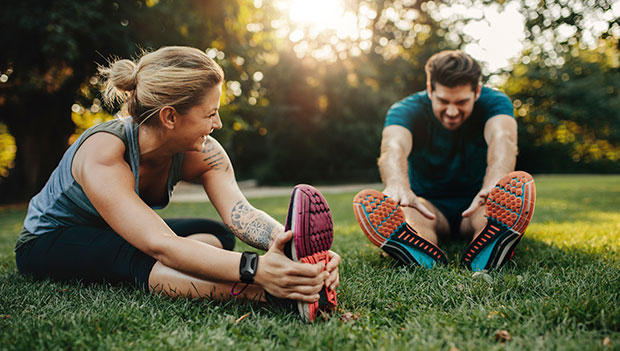
You may have come across the statistics for heart disease being the leading cause of death in the United States. So, it should go without saying that heart health is an important component of your overall health and wellness. It's never too late—or too soon—to prioritize a healthy heart through a well-balanced diet, regular exercise, and knowledge. The more you know and understand how your heart functions, the more you can do what is necessary to keep your heart strong.
Understanding heart rate variability (HRV) is one area of heart health that can help you keep better track of how your body is functioning. New innovative wearable devices like the Apollo Neuro tap into the science of HRV and may help support stress, sleep, and even social anxiety. But what is HRV? What does it mean? And how does it impact your overall fitness?
Let’s take a closer look at heart rate variability, methods for tracking it, and the impact it can have on your overall health and fitness.
What is Heart Rate Variability?
Heart rate variability (HRV) is a measurable reflection of the amount of time between your heartbeats. Along with peak and recovery heart rate, HRV has long been a measurement used to calculate cardiovascular health in the general public and physical fitness in athletes.(1) The medical community uses HRV as a measurable predictor for cardiovascular outcomes and heart health.
Heart rate variability does not mean you have an arrhythmia or abnormal heartbeat. Measured in milliseconds, this is the time shown from ‘R peaks” in the heart’s electrical pattern. In normal sinus rhythm, or the normal heartbeat, the variability between heartbeats is less than 0.12 seconds.(2)
However, in athletes training at high levels, there is a greater time between heartbeats, and these times can vary. These fluctuations have classically been undetectable unless tested with specialized devices such as an Electrocardiogram (ECG).(3) In someone with a normal sinus rhythm, HRV can fluctuate when you’re awake, asleep, calm, or stressed.
How Does HRV Relate to Fitness and Sleep?
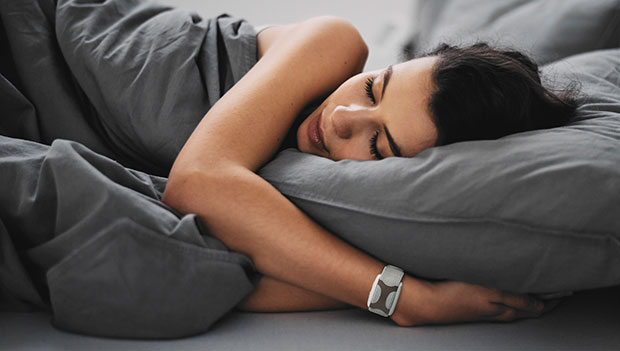
HRV has recently been utilized as a popular training tool for measuring exercise recovery. Why does HRV matter to athletes, and how is sleep related to all of this? High HRV means your heart is responsive to the training program, and your body is ready to perform. Low HRV means your heart is not adapting, and your chosen training program may be too much or not enough for you.
In athletes training at high aerobic fitness levels, such as long-distance runners, you would expect greater variability in HRV as they begin to peak for their events.(4) This high level of variability indicates the body’s readiness to perform at a high level, which can signal to athletes that they can push themselves during their workout and load up. However, HRV doesn’t just improve by going out and only training in aerobic activities. Recovery is an important factor that can be the most difficult for athletes to master.
So, why are rest and recovery important to athletes and their training programs? Every time you exercise, you break down your body; this is especially relevant when pushing yourself beyond your current fitness level, such as running a marathon or playing a game of soccer. HRV improvement occurs during what is known as long-term recovery.(3) Therefore, athletes that participate in high levels of sports should build in rest days or “time off” from working out. Looking at the time your body can relax and rest is recognized as an important component in any high-level training program.(5)
Today, athletes have access to many tools in their training bags to assist them in reaching their peak performance. A variety of trackers on the market can assist you with measuring distance, duration, and heart rate. Many of these trackers can even integrate with wearables such as Apollo Neuro to help you optimize your HRV for improved sleep, stress, performance, and even socializing. But while these trackers can help you with your day-to-day training, none of them can measure how effective your training is or if you are improving your HRV.
Heart Rate Variability and the Nervous System
To understand why HRV training is important, one must understand what controls HRV. HRV doesn’t just improve on its own; it relies on your sympathetic and parasympathetic nervous systems. Together these make up the Autonomic Nervous System (ANS). This system in the body is responsible for transmitting impulses from the central nervous system to the peripheral organs, like your heart. This command center makes your heart race when you are anxious or scared. ANS keeps your heartbeat in a normal range of 60-80 beats per minute while you are relaxing, and it revs up the heart when you are working out up to 200 bpm.(6)
How to Improve Heart Rate Variability
So how can HRV be improved? While hydration, diet, and avoiding excess alcohol can contribute, the greatest factor in improving HRV is recovery during sleep.(7) Yes, the quantity of sleep matters, but the quality of your sleep plays a much larger role. Sleep quality allows you to pull yourself out of bed for those early morning training sessions.
But how can today’s athletes relax enough to recover fully and improve their sleep quality and, therefore, their HRV? Luckily, devices are available that can help remove the guesswork and help cover any gaps in fitness training for athletes.
The Apollo Wearable: Actively Improves HRV
Utilizing a new touch therapy experience, the Apollo™ Wearable was created by neuroscientists and physicians for better sleep, more energy, relaxation, and focus. The Apollo wearable is unlike other fitness and health wearables because it doesn’t just track health biometrics. It works to help improve your health by strengthening your nervous system. Apollo does this by giving off soothing, gentle waves of vibration that interact with your ANS to help your body relax and reduce the feelings of stress (transitioning out of fight-or-flight and into rest-and-digest), putting you into a state that gives you more control over how you want to feel.
So, how does this all tie into fitness and performance improvement? Apollo works with your ANS (the control center that affects your heart rate) to help optimize recovery, letting you come back to your next workout even stronger. The science behind the technology and results are the real deal. Apollo has completed seven clinical trials, with 14 more underway.
Across the research found on their site, Apollo wearable users may experience:
- 40% less stress and feelings of anxiety, on average
- 9% more time in deep sleep, on average
- 11% increase in HRV, on average
- Up to 25% more focus and concentration
- Up to 30 more minutes of sleep a night
$40 OFF APOLLO NEURO Now let’s tie this all back to training. How can Apollo improve HRV and, therefore, overall fitness? How does getting better sleep affect your HRV and performance as an athlete? The deepest part of sleep is known as Stage 3 non-REM. During this sleep cycle, your heartbeat, breathing, muscle activity, and brain functions slow down significantly.(8) Also known as deep sleep, this stage is considered the most crucial stage for regenerating your body and brain. The other critical step during this sleep period is when the body releases growth hormone (GH).
This hormone is responsible for repairing tissue, muscle, and bone. GH helps regulate metabolism, immune system functions, and memory. Without enough of this level of sleep, you can wake up feeling tired. As you age, your ability to obtain and stay in REM diminishes along with HRV. Individuals unable to maintain NREM may experience a faster metabolism and heart rate during sleep, inhibiting their ability to fully relax, and may benefit from a wearable like Apollo. Afterall, a recent sleep study showed consistent use led to 14% more REM sleep each night on average.
That same study showed thatt Apollo users could get up to 30 more minutes of sleep a night when used at least three hours per day, five days per week. A double-blind randomized placebo-controlled crossover trial also validates the Apollo wearable as the first to significantly increase HRV, accelerating athletic recovery and cardiovascular fitness conducted at the University of Pittsburgh. Don't just take our word for it; check out the Apollo Neuro website for information.
Final Thoughts
Other than the many benefits of taking care of your heart, improved HRV may help ensure that your workouts are maximized and you're training to your fullest potential. The "easiest" way to do this is by prioritizing rest and recovery and getting plenty of quality sleep to help improve your HRV. If getting adequate sleep is more difficult for you than achieving a new PR, the Apollo wearable may be able to help you. But it could also help you achieve a new PR!
Why Trust Us?
ACTIVE.com’s editorial team relies on the knowledge and experience of fitness and wellness experts including competitive athletes, coaches, physical therapists, nutritionists, and certified trainers. This helps us ensure the products we feature are of the highest standard. Collectively, the team has spent countless hours researching equipment, gear, and recovery tools in order to create the most accurate, authentic content for our readers. Customer satisfaction is also a key part of our review process, which is why we only feature products that are highly rated.
References
- Shaffer, F., & Ginsberg, J. P. (2017). An Overview of Heart Rate Variability Metrics and Norms. Frontiers in public health, 5, 258. https://doi.org/10.3389/fpubh.2017.00258
- Soos MP, McComb D. Sinus Arrhythmia. [Updated 2022 Nov 25]. In: StatPearls [Internet]. Treasure Island (FL): StatPearls Publishing; 2023 Jan-. Available from: https://www.ncbi.nlm.nih.gov/books/NBK537011/
- Dong J. G. (2016). The role of heart rate variability in sports physiology. Experimental and therapeutic medicine, 11(5), 1531–1536. https://doi.org/10.3892/etm.2016.3104
- Nummela, A., Hynynen, E., Kaikkonen, P., & Rusko, H. (2016). High-intensity endurance training increases nocturnal heart rate variability in sedentary participants. Biology of sport, 33(1), 7–13. https://doi.org/10.5604/20831862.1180171
- Doherty, R., Madigan, S. M., Nevill, A., Warrington, G., & Ellis, J. G. (2021). The Sleep and Recovery Practices of Athletes. Nutrients, 13(4), 1330. https://doi.org/10.3390/nu13041330
- Laskowski, E. R., MD (2022, October 8). What's a normal resting heart rate? Retrieved April 25, 2023, from https://www.mayoclinic.org/healthy-lifestyle/fitness/expert-answers/heart-rate/faq-20057979
- Sajjadieh, A., Shahsavari, A., Safaei, A., Penzel, T., Schoebel, C., Fietze, I., Mozafarian, N., Amra, B., & Kelishadi, R. (2020). The Association of Sleep Duration and Quality with Heart Rate Variability and Blood Pressure. Tanaffos, 19(2), 135–143.
- Patel AK, Reddy V, Shumway KR, et al. Physiology, Sleep Stages. [Updated 2022 Sep 7]. In: StatPearls [Internet]. Treasure Island (FL): StatPearls Publishing; 2023 Jan-. Available from: https://www.ncbi.nlm.nih.gov/books/NBK526132/
About the Author

With 20 years of experience in Cardiology, Jennifer Myers has worked with thousands of people on their heart disease journey. She spends her free time advocating for Women’s Heart Health as a board member of the Women’s Health Care Fund, coaching ski racing at her local ski hill, and traveling with her family to soccer tournaments.
Get ACTIVE on the Go


Couch to 5K®
The best way to get new runners off the couch and across the finish line of their first 5K.
Available for iOS | Android

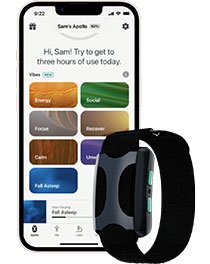




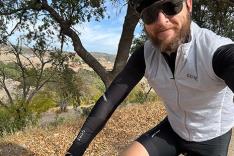
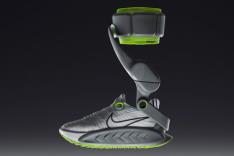


Discuss This Article